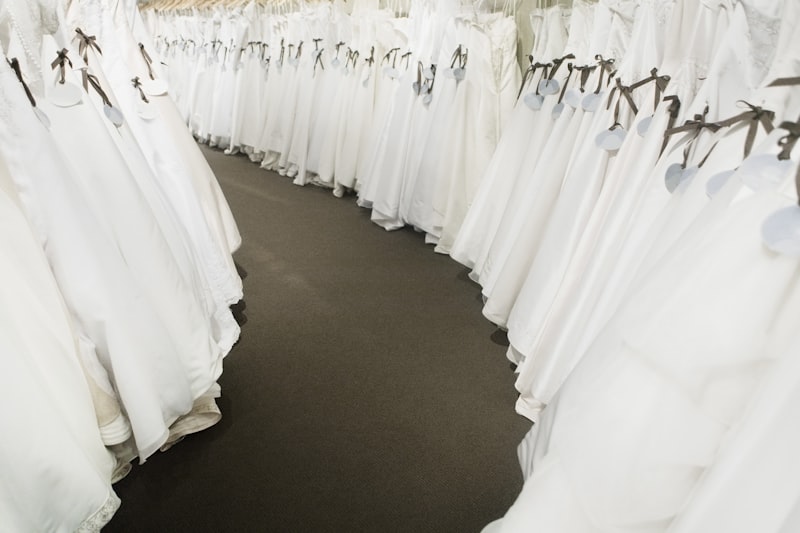The Impact of Fabric Choices on Wedding Dress Cost
The Impact of Fabric Choices on Wedding Dress Cost
Choosing the perfect wedding dress is one of the most significant decisions for brides-to-be. However, the cost of a wedding dress can vary dramatically based on numerous factors, with fabric choice being one of the most crucial. This article will delve deep into how different fabric choices affect wedding dress costs, considering the varieties available and the implications of each. We will also explore related factors that can influence pricing, including design complexity, embellishments, and regional market prices.
Understanding Wedding Dress Fabrics
When shopping for wedding dresses, the choice of fabric is pivotal not only for the look and feel of the dress but also for the overall cost. The fabric makes up a significant portion of the budget. Below, we outline some popular fabrics used in wedding dresses along with their general cost implications:
| Fabric Type | Description | Average Cost per Yard |
| Silk | A luxurious and smooth fabric that drapes beautifully. | $20 - $60 |
| Taffeta | Crisp and lightweight, often used for structured designs. | $10 - $30 |
| Chiffon | A sheer, flowing fabric that creates an ethereal look. | $8 - $25 |
| Lace | Delicate and intricate, used for overlays and detailing. | $15 - $50 |
| Satin | Soft and glossy, giving an elegant and smooth finish. | $15 - $45 |
How Fabric Choices Affect Wedding Dress Costs
The type of fabric chosen for a wedding dress can dictate the overall look and feel, which in turn affects the price. Here are a few points to consider:
1. Fabric Rarity:More exotic fabrics like silk and lace can significantly increase costs due to their rarity and the complexity of their production processes. For instance, pure silk bridal fabrics can range from $20 to $60 per yard, making them one of the most expensive options available. In contrast, synthetic alternatives like polyester can cost as little as $5 to $15 per yard, making them a budget-friendly option.
2. Construction and Labor:The complexity of a dress's design often correlates with the type of fabric used. Fabrics like chiffon and lace, which require more delicate handling and intricate sewing techniques, can escalate the cost due to the additional labor involved. A dress made from a more forgiving fabric like taffeta may be easier to construct and therefore less expensive in terms of labor costs.
3. Seasonal Considerations:Seasonality can also play a role in fabric choice and cost. For example, chiffon and lightweight fabrics might be more desirable for summer weddings, while heavier fabrics like satin are often favored in winter. As demand fluctuates with the seasons, so too can prices.
Bridal Designer vs. Off-the-Rack: The Impact of Fabric on Cost
When purchasing a wedding dress, brides have two main options: bridal designer gowns and off-the-rack dresses. Both categories vary in terms of how fabric choice impacts the total cost:
Bridal Designer Gowns:Designer gowns typically incorporate high-end fabrics like silk or intricate lace, which can lead to a significant price tag. Moreover, custom designs often mean that brides can choose their preferred fabrics, thus further influencing the final cost based on the materials selected.
Off-the-Rack Dresses:In contrast, off-the-rack dresses may utilize more affordable fabric options to appeal to a broader market. These dresses may not offer the same fabric variety as a custom gown but can be a great choice for budget-conscious brides.

Additional Costs to Consider
While fabric choice plays a vital role in determining the cost of a wedding dress, several other factors also need consideration:
1. Design Complexity:A simple A-line gown in a less expensive fabric will generally cost less than a more elaborate ball gown made from luxurious fabric.
2. Embellishments:Additional costs can be incurred for embellishments such as beading, embroidery, and appliqués. These can add both labor costs and material costs, depending on the intricacies involved.
3. Customization:If a bride wishes to customize her dress further, such choices can also lead to increased costs as designers often charge extra for custom alterations.
4. Regional Market Differences:The cost of fabrics and wedding dresses can vary significantly by region. For example, brides in urban areas may encounter higher prices than those in rural locations due to market demand and higher operational costs for bridal shops.
Final Thoughts and Recommendations
Ultimately, the impact of fabric choices on wedding dress cost is profound and multi-faceted. Brides should consider their budget, the desired aesthetic, and the practicality of each fabric type when making their decision. For those on a budget, it's worthwhile to explore off-the-rack options and look for affordable alternatives to high-end fabrics.
In summary, understanding the relationship between fabric choices and wedding dress costs can empower brides to make informed decisions. Additionally, consulting with bridal experts and designers can provide insightful advice tailored to individual needs and preferences. With careful thought and planning, brides can find the perfect wedding dress that aligns with their vision and budget.
As you prepare for your big day, remember to embrace the journey of finding the ideal gown. Whether you choose luxurious silk or a budget-friendly polyester, it’s about feeling beautiful and confident on your wedding day.
